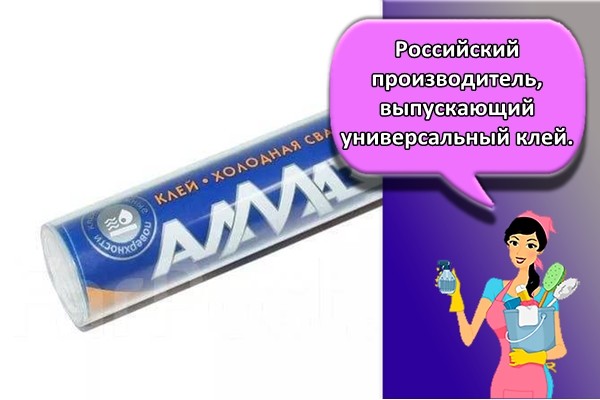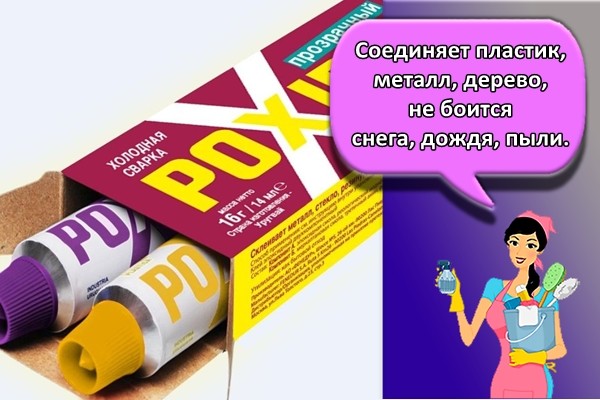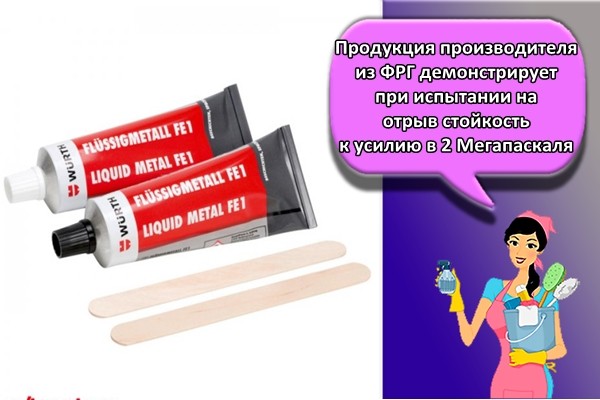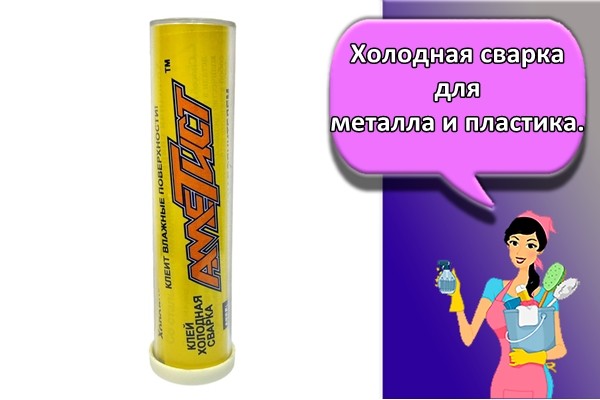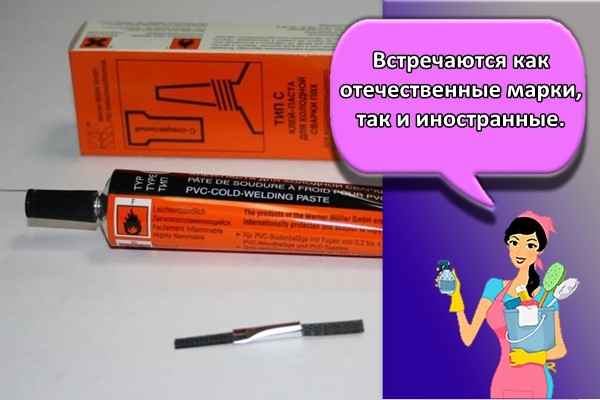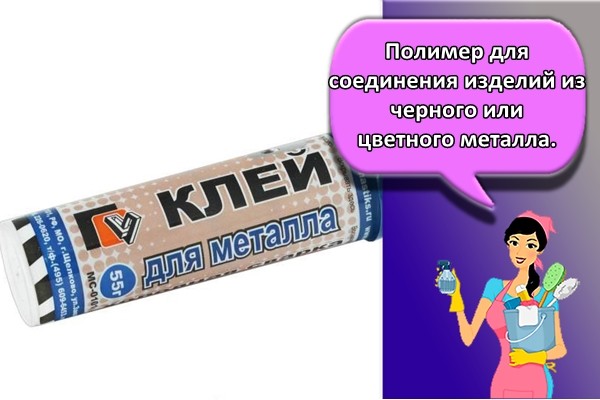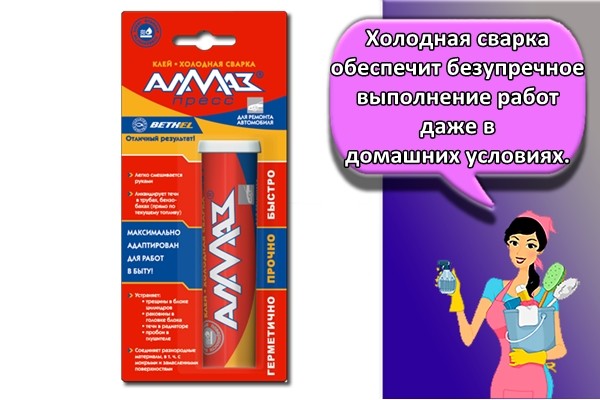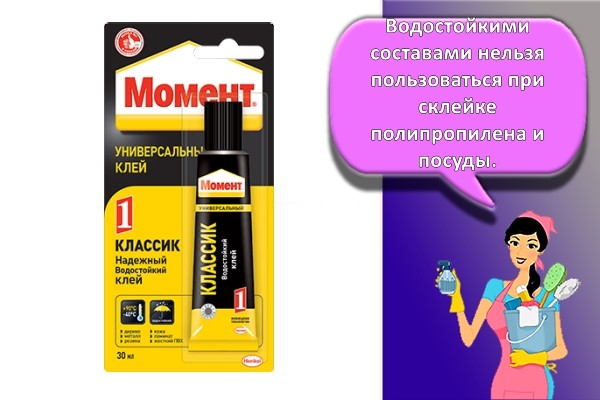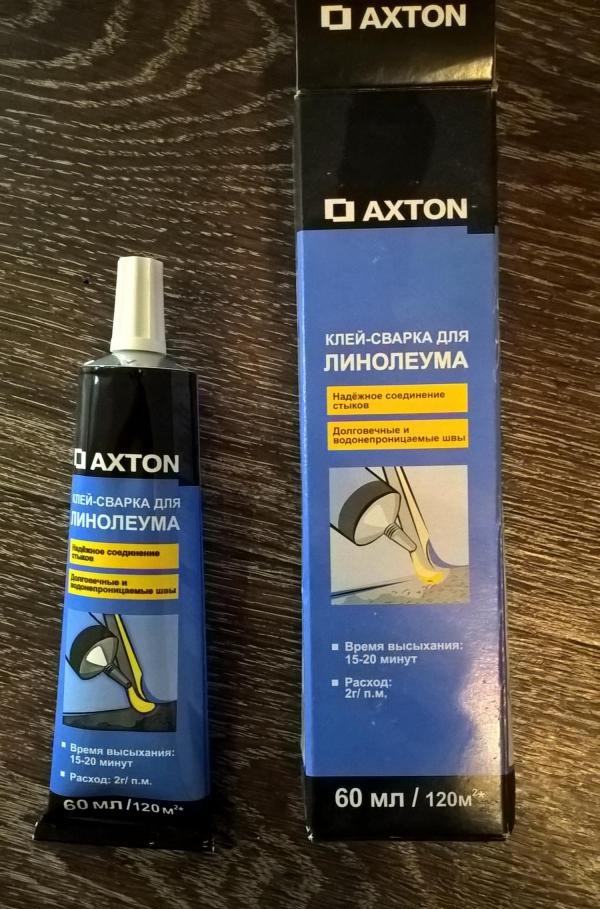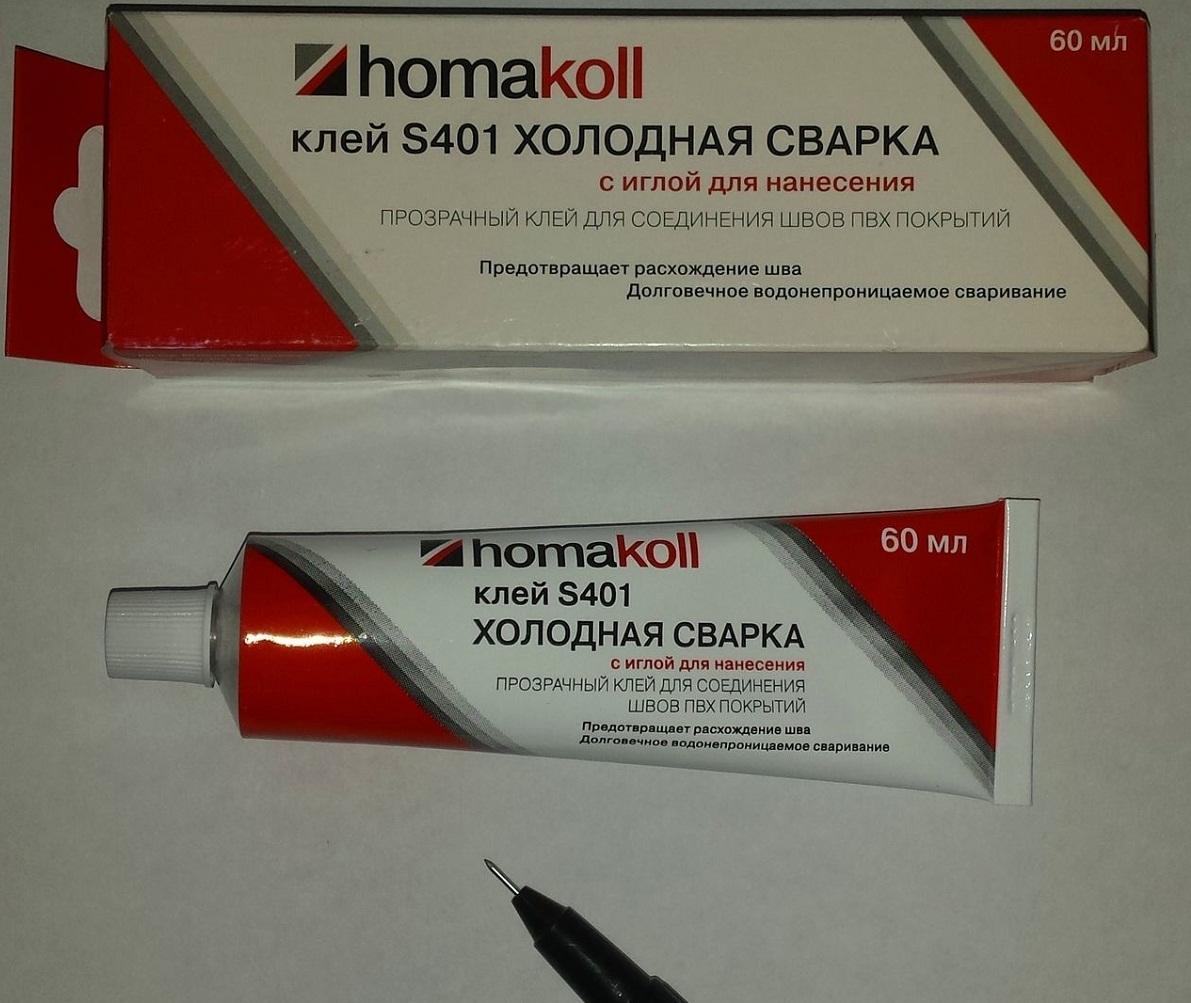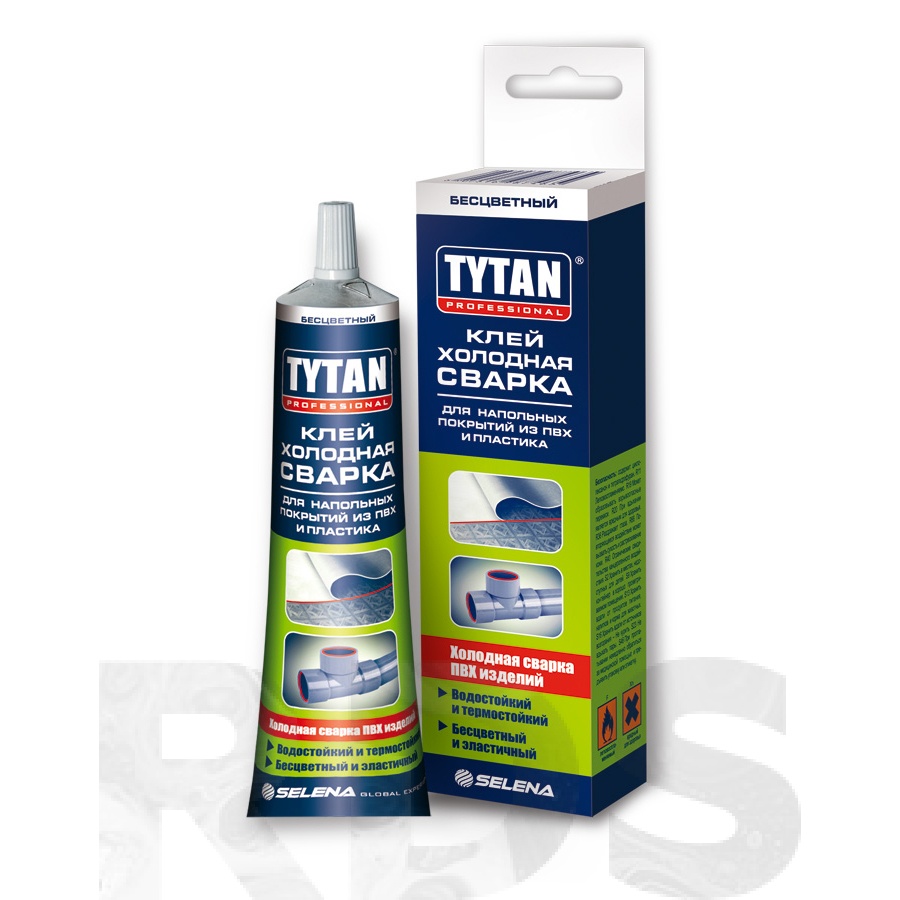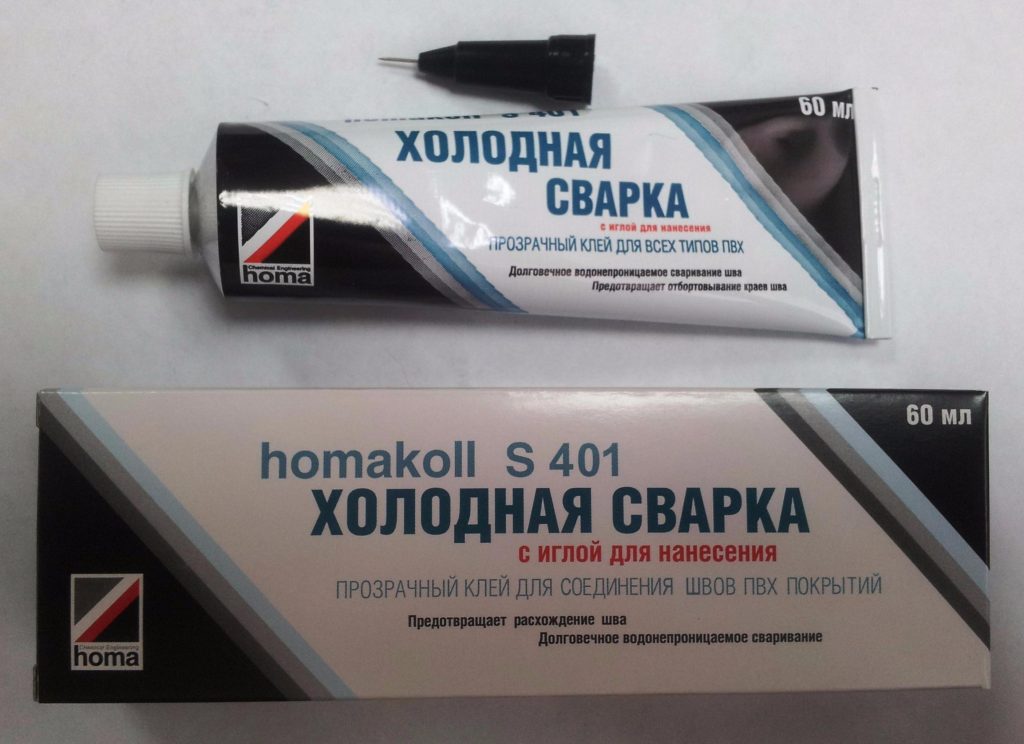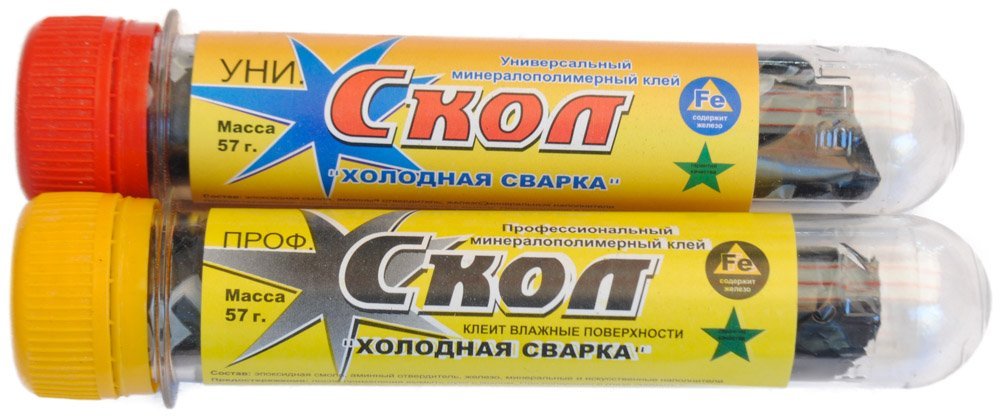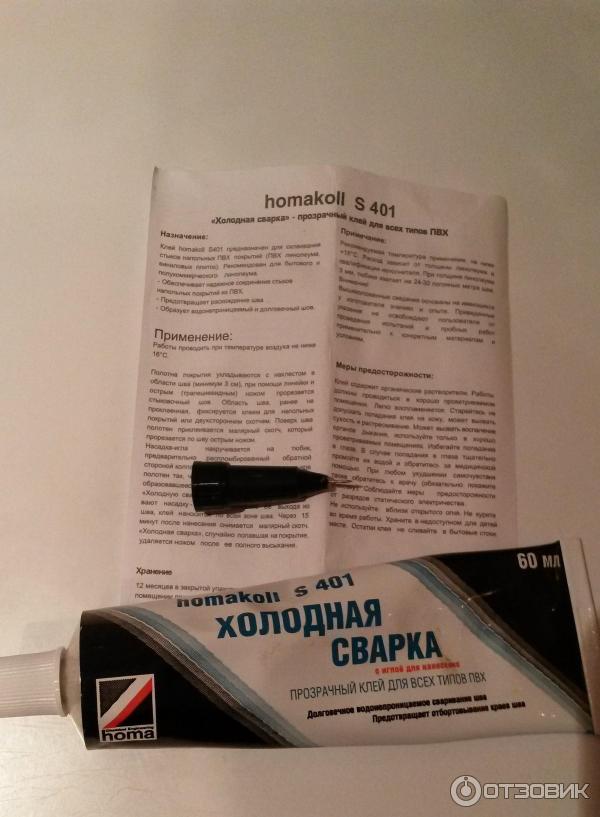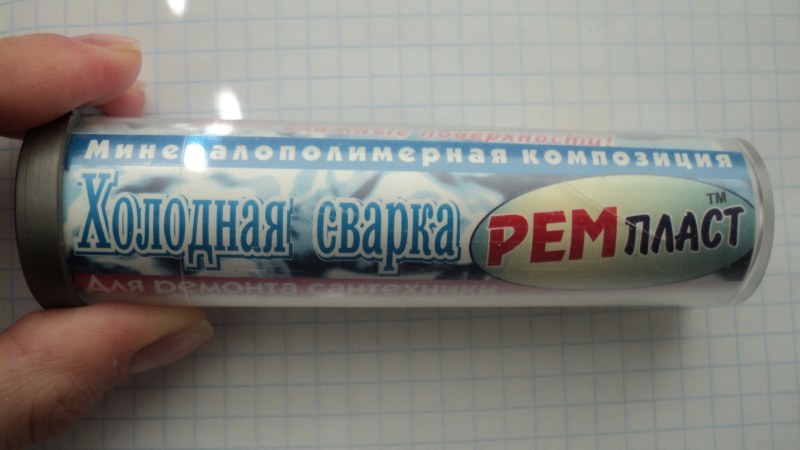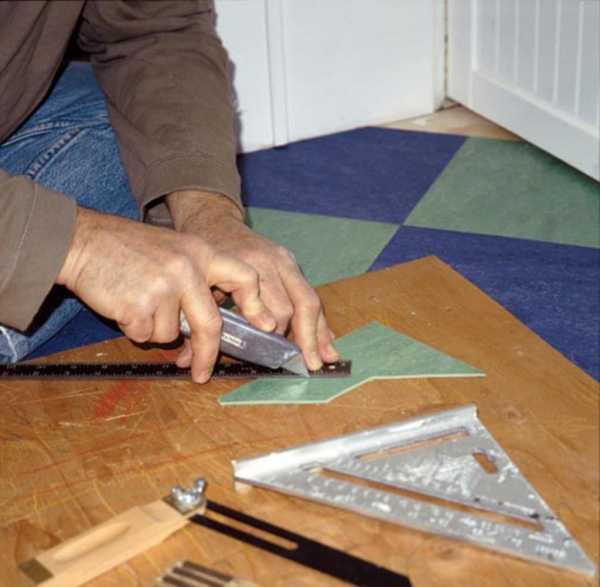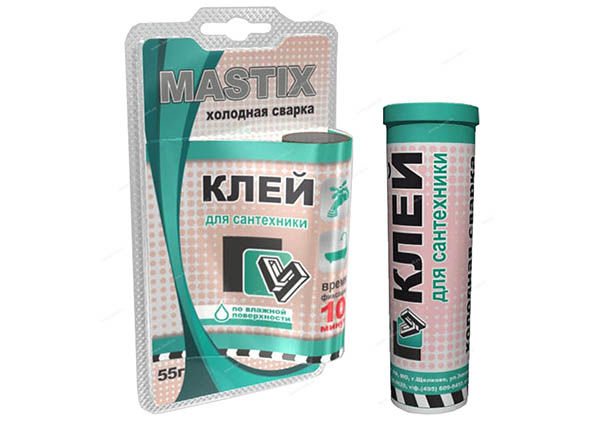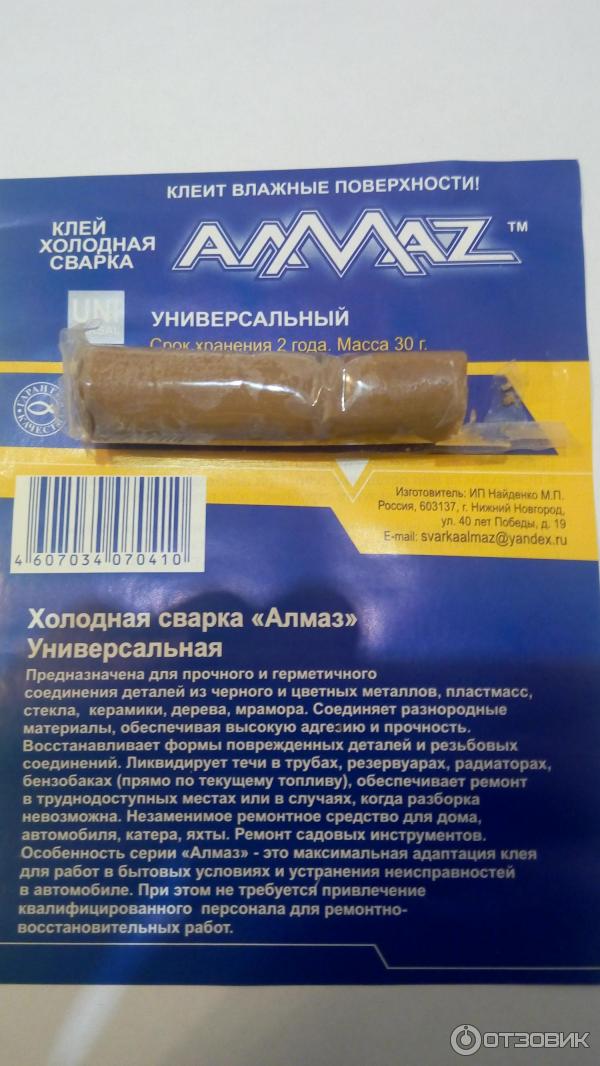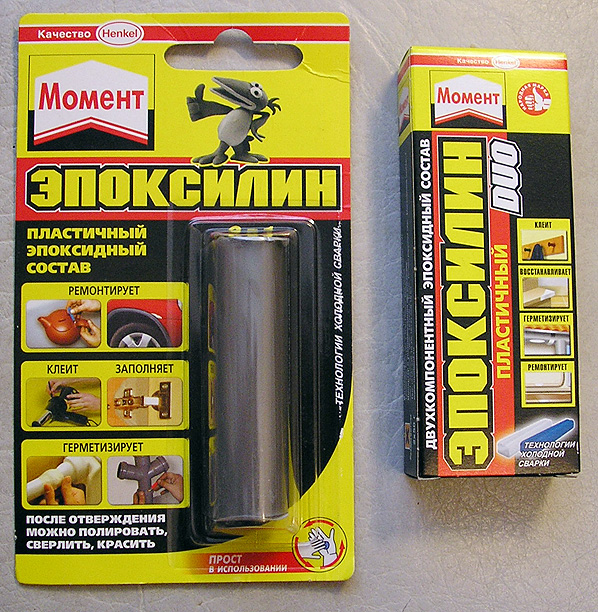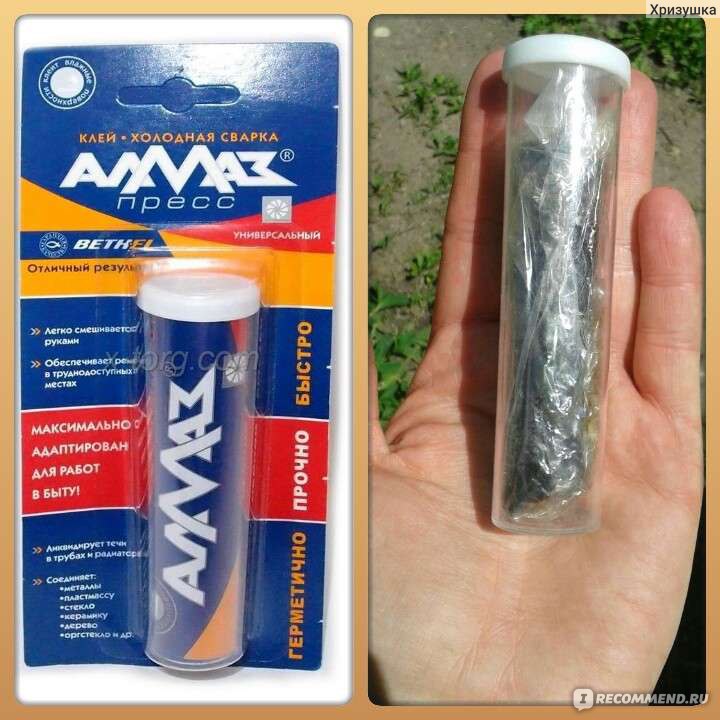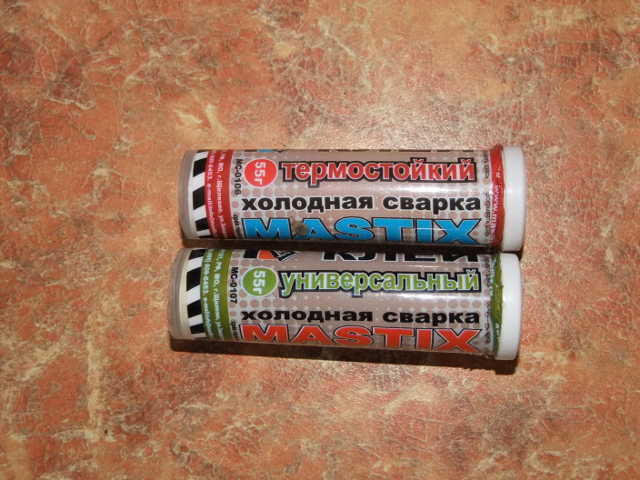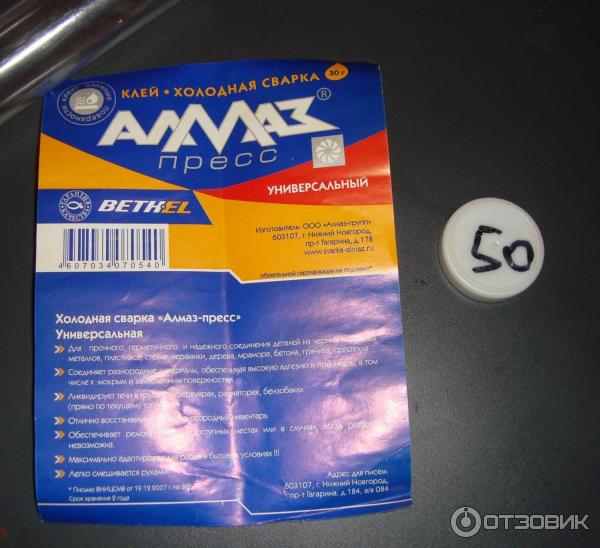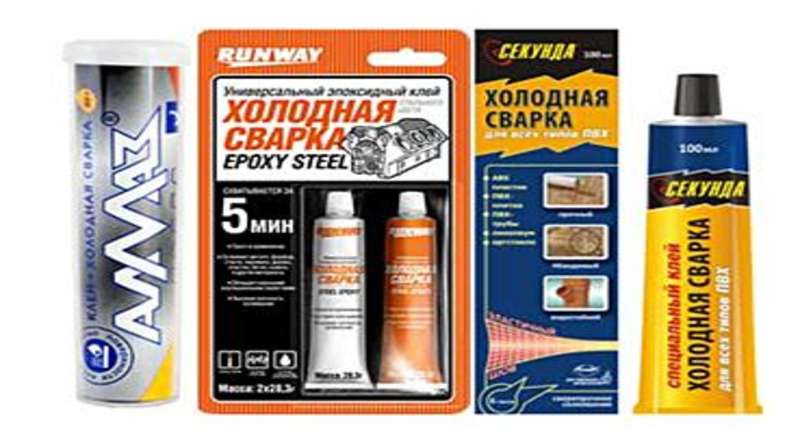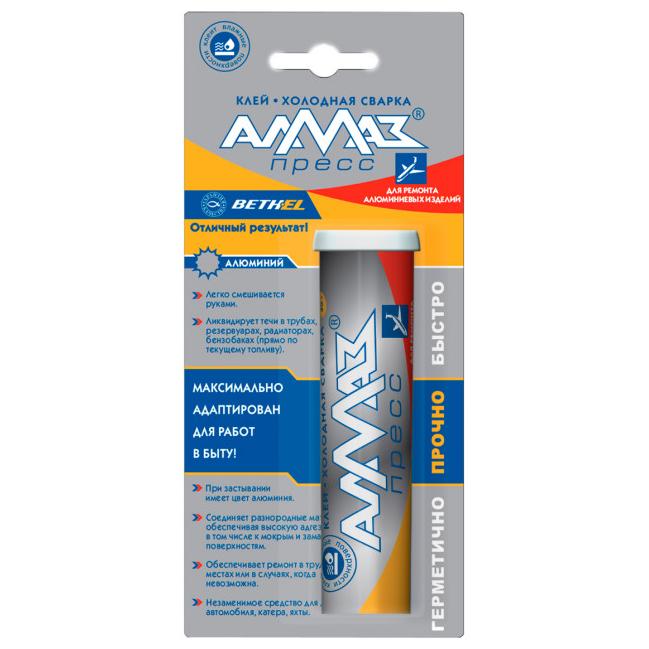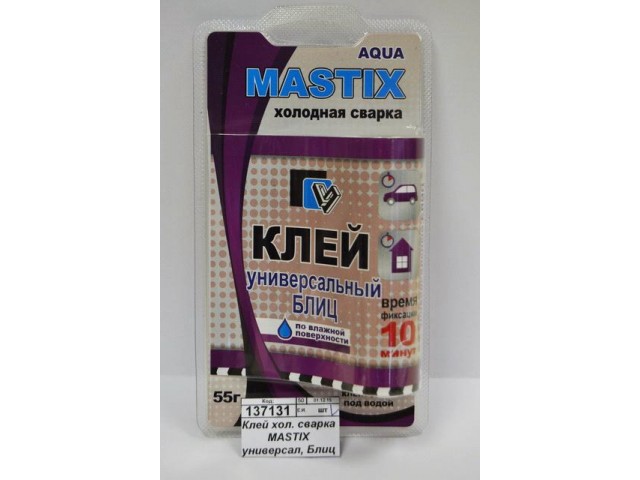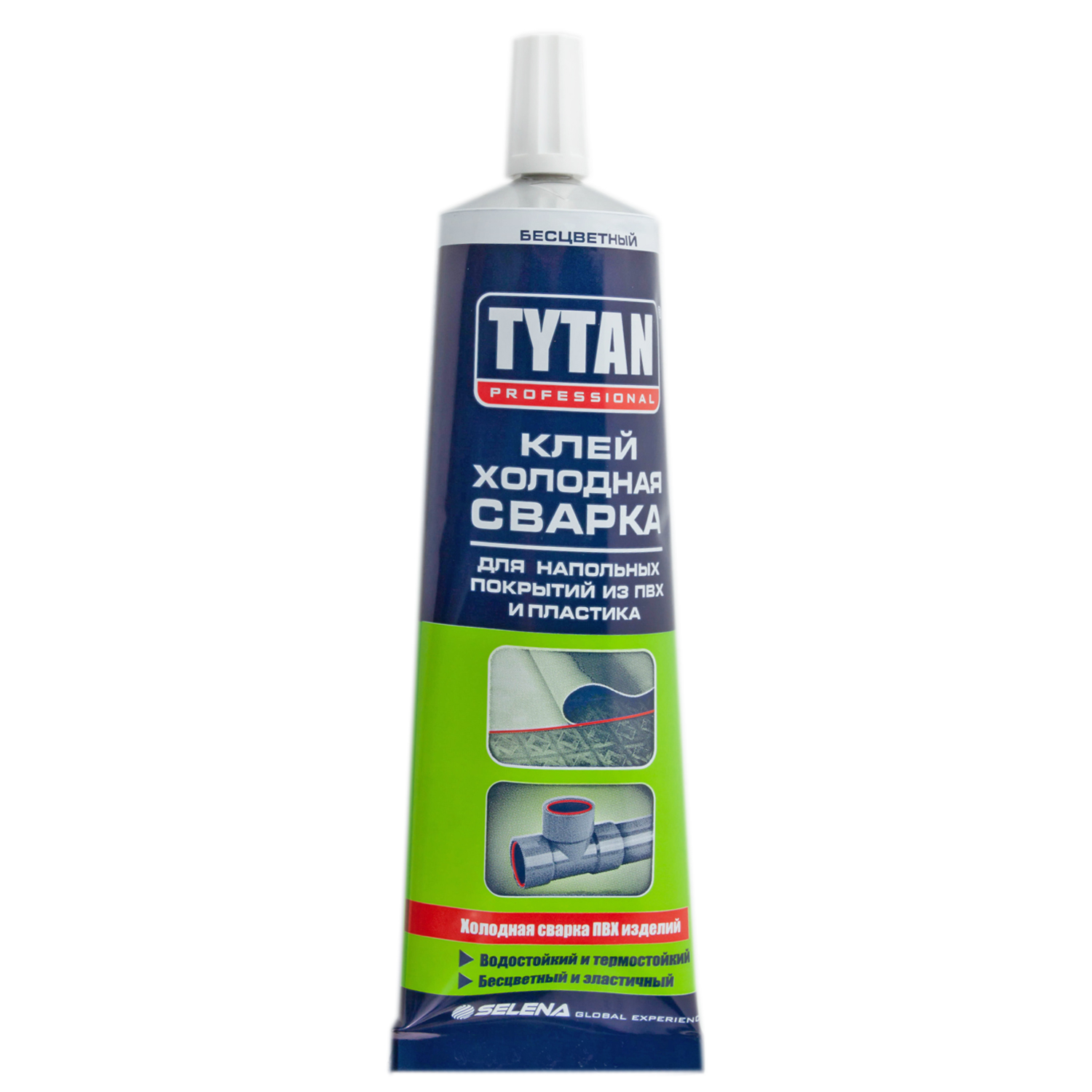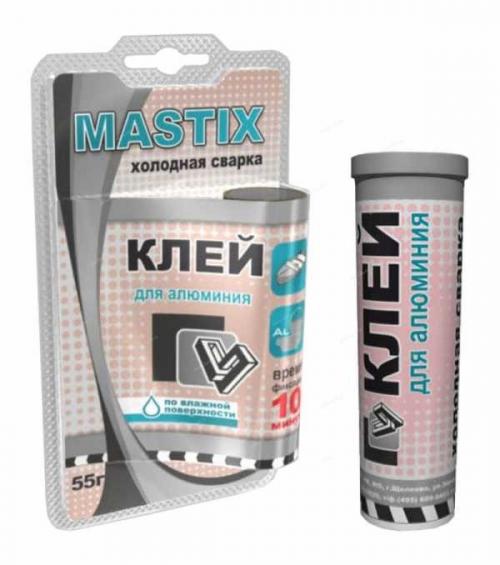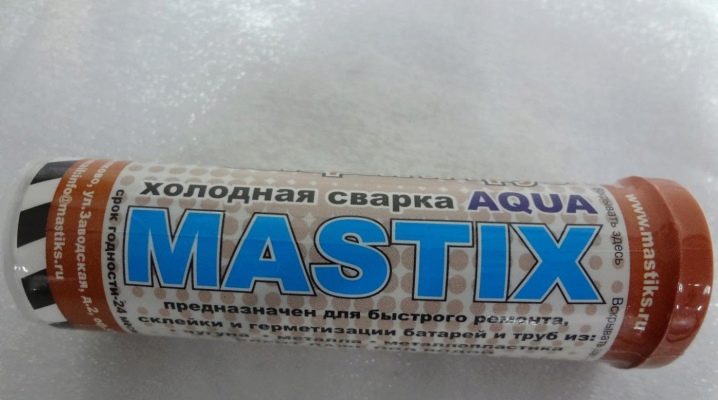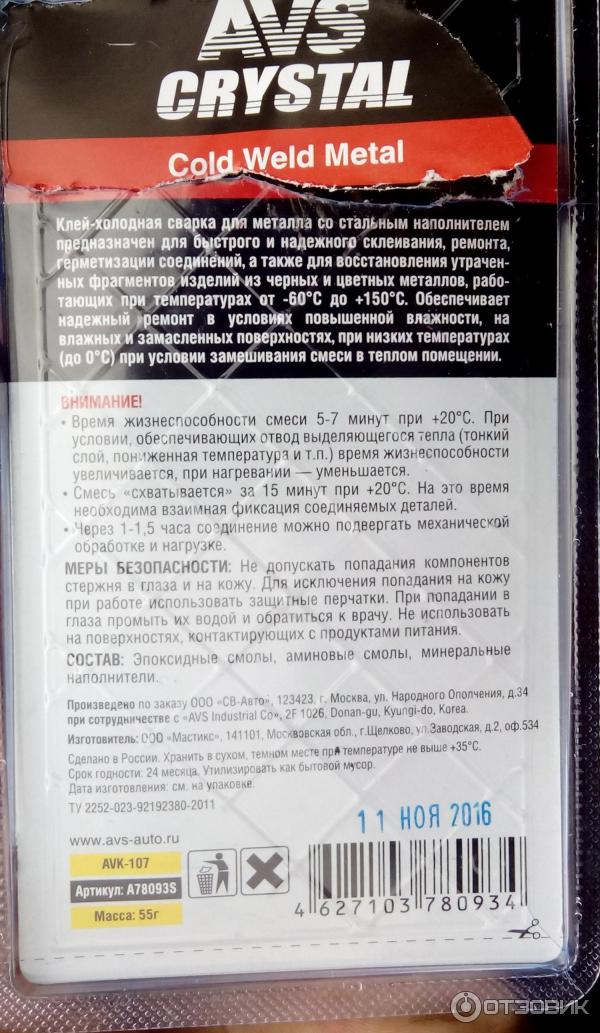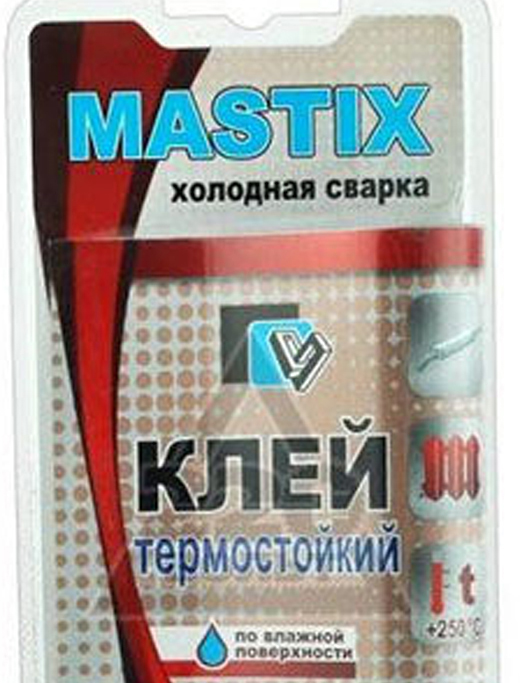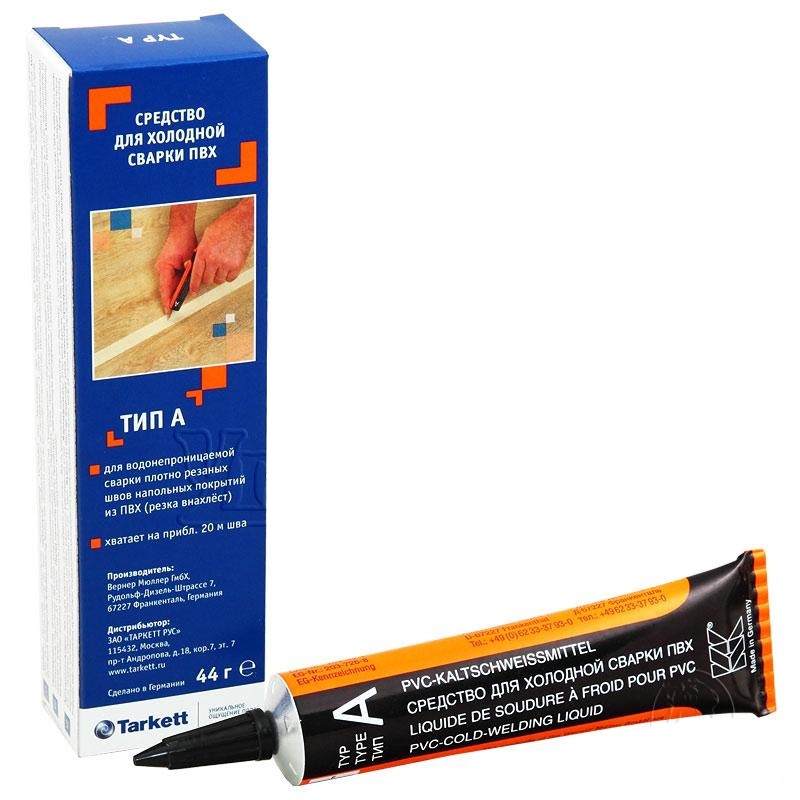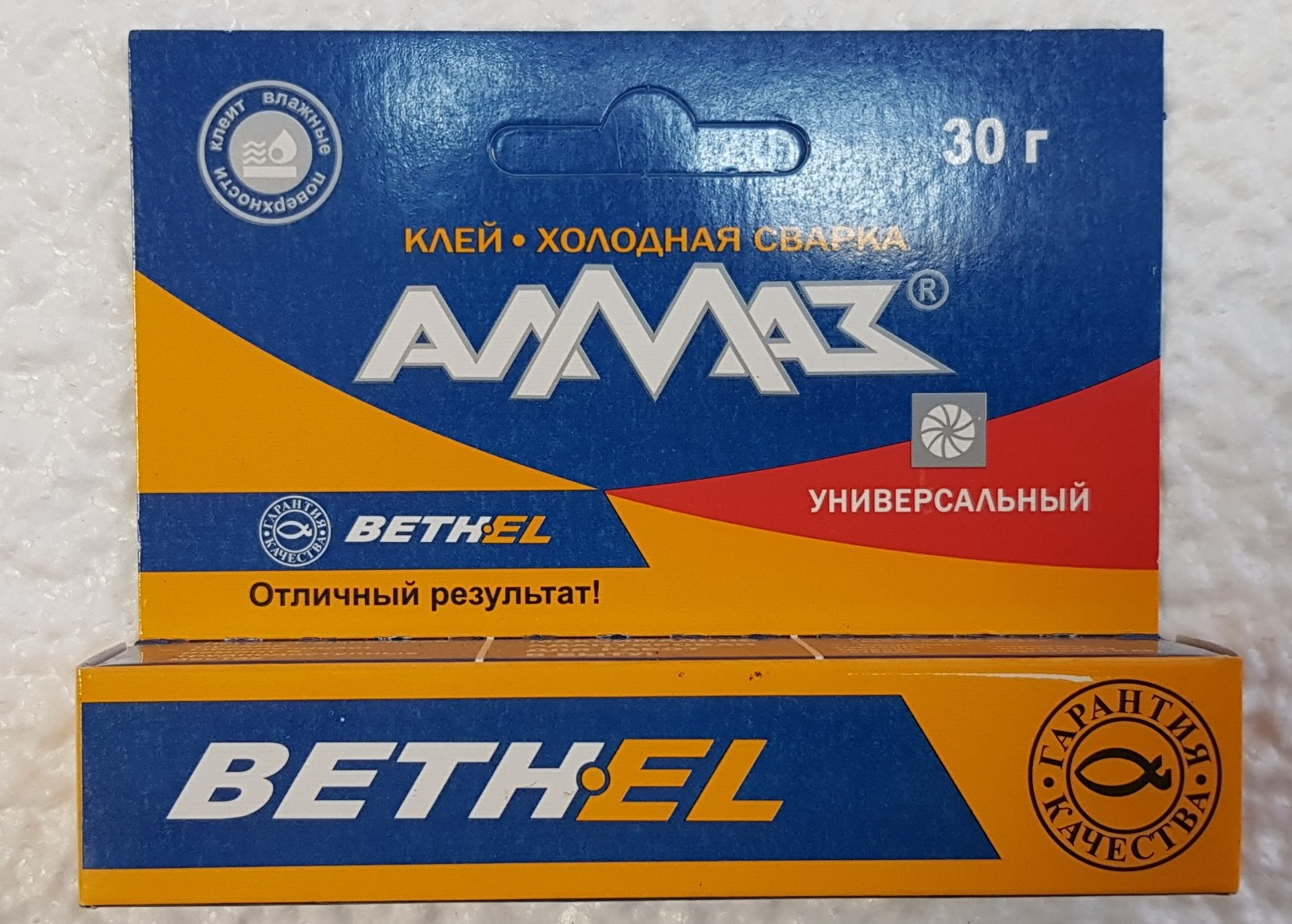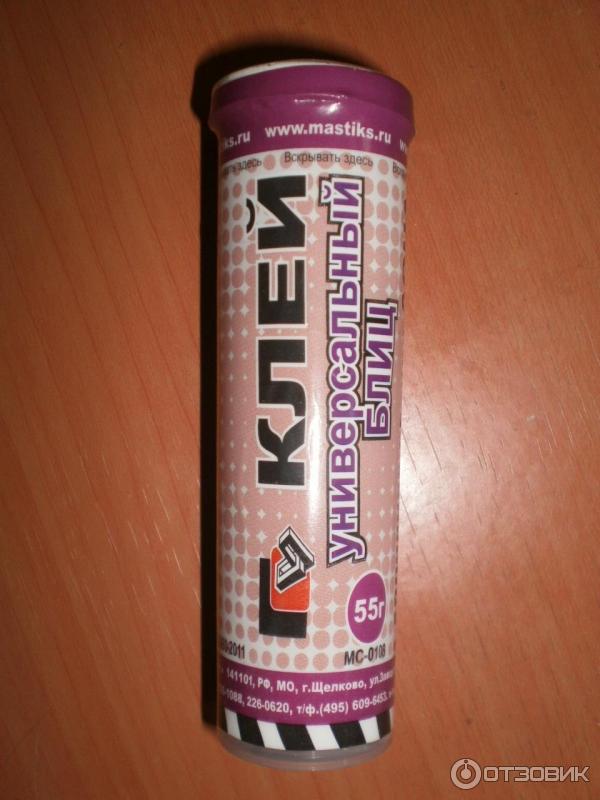Application rules
Adhesive use instructions:
- Cleaning from dirt, degreasing, sanding the joints.
- Mixing the components of the glue with each other (you must use gloves soaked in water) - you need to get a mass of a uniform shade. The composition must be warmed up in the hands so that it becomes sticky and plastic.
- Applying glue to the elements to be connected, fixing them for 15-20 minutes with a tourniquet or clamp.
The adhesive will harden in 60 minutes and can be painted, tapped, drilled and otherwise processed. The maximum adhesive strength will be reached 1 day after application (structural loads are allowed).
If work is carried out with a wetted surface, it is required to press and smooth the composition until it starts to stick or until it stops flowing. To accelerate the curing of the glue, it is recommended to heat the joint area (this approach will improve the reliability of gluing the surfaces). It is recommended to use a conventional hair dryer to ensure heating.
Cold welding "Almaz" should be carried out in a well-ventilated room or in rooms with good ventilation. Gloves are required. If the substance comes into contact with the skin or eyes, rinse them with cold running water. If necessary, you should consult a doctor.
Varieties of cold welding
There are two types of welding: one-component and two-component. If we compare 1-component and 2-component welding, then there is no particular difference in the quality of the weld between them.
But, if you read consumer reviews, then most still choose two-component welding. It is used in the performance of the most laborious jobs when increased output strength is required.
In terms of consistency, component components, the following types of welding are distinguished:
By area of use:
- Universal. Designed to work with all types of surfaces. This type of welding is not popular due to insufficiently high characteristics.
- For working with metals. This group is distinguished by the presence of a metallic filler. Has excellent characteristics.
- For car repair work. This type is similar to the previous one, but the composition is designed specifically for the repair of auto parts.
- Special. This type includes welding for work under water, at high temperatures.
Cold welding of metal
To perform work using glue, cold welding for metal does not require expensive equipment and professional skills. It is necessary to choose the right composition for cold welding. The instructions for the application of a particular type of adhesive must be carefully followed. Cold welding can be used when repairing pipelines and restoring the tightness of various containers, for example, car radiators, water heater tanks. The procedure for using dry welding for metal:
- Sand the surfaces to be treated with an emery cloth. Metal with skin scratches should be visible.
- Dry and degrease surfaces. You can also cook on a wet surface, but the strength of such a connection will be less.
- Moisten your hands with water to prevent adhesion of the glue components.
- Cut a piece from the tube. Cut across the tube. Knead the cut piece, thereby mixing the components of the glue. Apply the resulting soft mass to the gluing site quickly. The composition begins to harden within a few minutes.
- Liquid glue, which is produced in syringes, should be mixed in a separate place before applying to the glued surfaces.
Complete solidification should take place after 24 hours.After that, you can expose the seam to cleaning and painting. Most adhesives can withstand temperatures up to 260 ° C. Certain types of adhesives designed specifically for high temperature applications can withstand up to 1316 ° C.
To remove cold welding from metal, you can purchase a ready-made composition at a hardware store or use acetone. You need to soak the composition well and try to remove the entire seam. If that doesn't work, you can file off the glue or cut it off with a knife.
Types of cold welding for plastics
Manufacturers of this plastic gluing technique offer several types of cold welding for plastic:
- One-component composition, capable of gluing all types of plastic. Has the consistency of ordinary office glue. Often used in everyday life, it is considered universal.
- Two-component. The name itself speaks for itself, consists of resin and filler. For use, mix in equal parts.
- Rod, produced in the form of a pencil with an internal filler. Before use, requires additional mixing, until a homogeneous substance.
 Stick cold welding in the shape of a pencil
Stick cold welding in the shape of a pencil
By consistency, they are divided into liquid and plastic-like. They are used depending on the complexity of the work and the thickness of the welding.
Choice of cold welding
Various manufacturers offer a wide range of this product. The choice of the composition must be approached with special care, taking into account all the parameters of the materials to be glued.
Temperature regime
When planning work under high thermal conditions, it is important to clarify the maximum temperature regime that the adhesive can withstand. Standard - 200-260 degrees, depending on the brand
If you do not pay attention to the characteristics of the composition, violations of the operation of the repaired elements are possible.
Maximum loads
Assumes allowable pressure rates after cold welding
Shear and break data will help to avoid poor-quality joints, and make the seams very strong.
Drying speed. For long-term repairs, slowly cooling adhesives are suitable - about 1 hour, and for quick repairs, cold welding of instant gluing is used - 3-10 minutes.
Consistency. With the help of a liquid composition, it is convenient to glue thin parts, the body of any equipment. Plastic-like, intended for rougher work, leveling bumper surfaces, connecting heating and sewerage systems, rainwater.
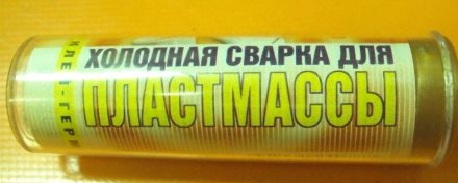 The choice of the composition must be approached with special care, taking into account all the parameters of the materials to be glued.
The choice of the composition must be approached with special care, taking into account all the parameters of the materials to be glued.
Temperature characteristics
The bonding process takes place without heating with plastic deformation. This is good and bad at the same time. Otherwise, without establishing deep interatomic bonds in the parts to be joined, but strong enough in normal practice for quick and high-quality joining of parts, sealing cracks, eliminating leaks, filling the surface.
Manufacturers' guidelines do not differ much when it comes to the preparation and use of the working composition. Unambiguously at room temperature 18-20 ° С, with a deviation of 10 degrees in one direction or another, without changing the initial and even more so the final properties.
Working area of operation from -60 to + 260 ° С. Almaz high-temperature cold welding reaches a maximum of 1316 degrees Celsius.
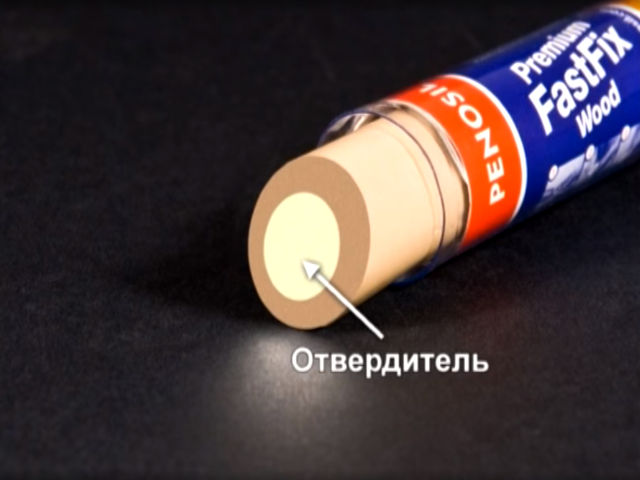
Tips from experienced welders
For the best adhesion of parts, it is recommended to apply the adhesive to a wet surface. The method is more in demand in problems with pipe leaks. Therefore, when performing repair work, you can not shut off the water.
There are some helpful tips to remember:
- When repairing pipes, pipeline components, it is necessary to buy an exceptionally moisture-resistant composition, taking into account constant contact with the liquid.
- If you have to urgently repair a leak in a plastic pipe, later such a patch must be changed - the adhesion will be poor.
- For faster hardening of the mass, you can use a hair dryer with warm air.
- It is worth purchasing only funds from trusted manufacturers.
- Do not use material beyond the expiration date.
Advantages of cold welding:
- There is no heating, which means that the structure of the metal will not change.
- A strong seam can be made.
- Cold welding can be used in emergency fire and explosion hazardous premises.
- There is no need for special preparation to perform the work.
Have you used cold welding?
There was a case!
Application area
In recent years, plastic has been increasingly used in various types of technology and other areas. Accordingly, cold welding for plastics is becoming more in demand every year. It is worth highlighting the main areas of application of this material:
- Repair of plastic instrument cases;
- Putty on bumpers on cars;
- Repair of fishing rods;
- Sealing leaks in plastic pipes;
- Bonding of plastic elements.
It is worth noting that cold welding glue for plastic is capable of attaching other materials to it, which expands its scope.
Suitable brands
There are many brands that can fit this case. After all, not so high requirements are put forward here as, for example, for cold welding for stainless steel. EP380 is one of the most common and easy-to-use brands. It has the following parameters:
|
Parameter |
Meaning |
| Connection strength |
3,500 PSI |
| Maximum working temperature |
93 degrees Celsius |
| Curing time |
15 minutes |
| Setting time |
4 minutes |
| Volume |
14 ml |
In addition, there is an even more reliable option, which is cold welding for Poxipol plastic. It refers to two-component, in which each material is in a separate container. This mixture has the following parameters:
|
Parameter |
Meaning |
| Shear test |
237 N |
| Peel tension |
5.4 MPa |
| Primary hardening time |
1 hour |
| Time of retention of the plastic state |
10 minutes |
| Full solidification time |
24 hours |
| Maximum shear force of the joint |
993 N |
| Average shear stress |
2.2 MPa |
Choice of cold welding for plastics
Selecting the right brand is quite difficult, since there are many different options on the market that are difficult to list. To make the right choice, you need to be guided by the technical parameters of the product. If operation at high temperatures is planned, then it is advisable to find out what temperature cold welding can withstand, since it often turns out to be lower than that of the plastic itself, which can interfere with normal operation.

Features of cold welding of plastic
One of the main parameters is the strength of the connection, so you need to know the data for tensile and shear, depending on what loads the product will be subjected to. The strength of the connection also contributes to the resistance to vibration loads. If you need a tool for quick repair, then you need to select a material with fast drying. The spread in this parameter is from 3 to 15 minutes.
Instructions for use
Instructions for the use of cold welding for plastic require a clear sequence of actions. The first step is to prepare the surface to be joined. Processing is carried out using solvents and sandpaper to remove grease and increase the area of the joint. Without degreasing, the quality of the joint begins to drop sharply.

Surface preparation for cold welding of plastic
After that, you need to measure the amount of cold welding used, since after stirring it can no longer be reused.When preparing, you need to measure out an equal amount of each component. Then you need to start mixing, you should get a homogeneous mixture of soft consistency. From it, you can sculpt figures to seal cracks and chips, and also use it as glue. A few minutes after kneading, the mixture will begin to harden, so do not delay the repair process.
After applying to the surface, you need to press down the mixture with something. If pipes are connected, then it is advisable to use a tourniquet. Otherwise, you can make any press yourself.
Security measures
Like many other materials, plastic cold welding requires certain safety precautions. After all, this is not the safest remedy for health. The following situations should be avoided:
- Contact with the composition of the mass in the eyes of a person or on open areas of the skin;
- Storage of the product in direct sunlight;
- Work with the mixture without protective equipment such as gloves and goggles;
- Storage in a place accessible to children;
- Contact of cold welding with food and other foreign objects with which a person will then come into contact.
If the mixture gets on the mucous membrane, rinse it with water as soon as possible. After that, it is advisable to consult a doctor. If there was contact with the skin, then it is not so scary and you can do with thorough washing with soap.
Criterias of choice
There is no single answer to the topic of which cold welding is the best for metal, because there are no ideal compositions.
When choosing, you need to pay attention to the following factors:
First of all, you need to study the composition. In order for the seam between metal parts to be as strong as possible, the structure of the epoxy must be more uniform.
When using gluing on high-temperature devices, you need to see what temperatures the product can withstand after hardening. The seam will lose its strength when heated above the permissible temperature.
Curing time
If you need to carry out quick repairs, it is important to buy a quick-setting adhesive.
Benefits of cold welding
Any method of joining parts has both strengths and weaknesses. Advantages of cold welding:
- Reliability of connections.
- No electricity or gas costs.
- There is no additional learning curve to use cold welding.
- The application process takes place with the help of improvised means.
- With proper application and high-quality composition, the finished seam is stronger than the material to be glued.
- Fast solidification. You can start using the glued part after 2-3 hours.
- No waste after application.
Unlike hot welding, a cold compound does not subject the object to heat and subsequent destruction.
Manufacturers
The most famous manufacturers of cold welding will be indicated below:
- Poxipol;
- Penosil;
- Zollex;
- Diamond;
- Alteco;
- Nowax.
There are other companies that make metal bonding compounds, however, the most popular ones were presented here.
Advantages and disadvantages of Poxipol
The popularity of this brand of glue is due to its excellent adhesive properties. The seam is durable, does not collapse over time. The advantages of Poxipol are as follows:
- preservation of the joint volume after drying, the possibility of applying an adhesive layer of any thickness;
- the use of glue on any materials (even on different structures, density), no damage and corrosion when applied to most types of plastic;
- water resistance, oil resistance, scratch resistance;
- the possibility of applying on vertical, horizontal bases using a continuous and dotted method;
- ease of mixing and ease of application;
- fast setting and short time to full hardening;
- the ability to use for indoor and outdoor work;
- lack of solvents in the composition, the possibility of using in residential premises, children's institutions;
- lack of traces, stains, streaks after drying;
- availability for sale in almost all hardware, hardware stores;
- simplicity and clarity of instructions for use.

The disadvantages of Poxipol glue include its low tensile strength. Therefore, you should not use the glue in conditions where parts are exposed to vibration, other movement, deformation, and high mechanical stress. The quality of adhesion decreases if the surface is not properly prepared, which can also be attributed to the disadvantages of the glue. Another disadvantage is the risk of damage to some materials (teflon, polypropylene, polyethylene), this glue cannot be used on them. Other disadvantages:
- higher price compared to domestic adhesives;
- low melting point;
- short pot life after dilution;
- the need for mixing components;
- too small packaging (if there is a large amount of work).
Usage guide
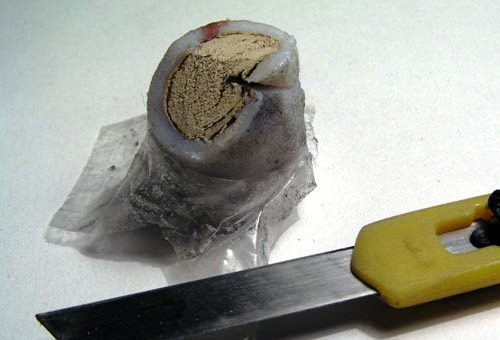
It is necessary to use this substance in accordance with the manufacturer's recommendations, which are shown in the instructions. It is quite simple to use, so it is possible to connect, including cracked glass. Colorless welding is available for this purpose.
To make a reliable seam, you must correctly follow the following rules:
- Preparation. It is recommended to free the working surface from dirt and remove large protrusions. Wet parts with the ability to pre-dry more correctly. It is imperative to degrease the parts. This is a very significant step, which guarantees the utmost quality of the connection.
- Next, you need to prepare the composition. The liquid adhesive must be combined with the hardener and the dry seal must be mixed until uniform. When stirring, use disposable gloves pre-moistened with a small amount of water.
- After preparing the consistency, you must quickly apply it.
- After painstakingly connecting the components, you need to level the plane. After complete drying, you can additionally clean the seam.
Such a simple technique can become indispensable in domestic use, which, if the instructions are followed, is not inferior to classical welding methods.
Expert opinion
Kulikov Vladimir Sergeevich
Despite the high strength of the seam, it should not be used in high-risk areas. For example, for connecting gas pipes. Such work should be trusted only by experts with professional equipment.
Composition and characteristics
Cold welding is a one- or two-component adhesive having approximately the following composition:
- as a base - various resins that provide flexibility;
- as a filler - crushed metal to a powder state;
- as additional materials, there are various types of sulfur and more.
The main parameters of the quality of the repair performed are determined by the composition of the glue, the quality of cleaning the adhered surfaces and the method of its application. In theory, you can try to achieve a seam hardness comparable to the quality of bonded metals in conventional welding, but most often the resulting seam is significantly inferior to the conventional method. Therefore, you should not use such glue in case of serious breakdowns.
Cheap weldings keep temperatures up to two hundred and fifty - three hundred degrees, but there are also those that will not fail at one thousand three hundred and fifty degrees. Especially heat-resistant compounds are used when repairing parts subject to high friction, high temperatures, or when it is simply impossible to use conventional welding.
Types of adhesives
All Almaz products are made in the form of plastic rods, consisting of two layers. The central part of the bar is gray, and the outer cover is white.
A mass of epoxy with fillers and plasticizers is concentrated in the center.A layer of polyamine hardener is evenly distributed over the outer surface. Without it, the polymerization process is impossible. A series of cold welding Diamond is presented in several types.

Glue "cold welding Almaz" of universal action is intended for repairing products made of any metals, concrete, wood, various plastics, natural stones, ordinary and organic glass.
A highly specialized series is represented by wood glue. This type of cold welding can help in the repair of items made of any wood, veneer, plywood. The composition can glue wood with other materials.
Car repair glue is indispensable for the repair of gas tanks, radiators, exhaust pipes. The paste can be used for repairing yachts, boats, solving any problems at home and on vacation.
A type of cold welding glue with steel filler provides a particularly strong connection of metal parts from different alloys. The paste is inherently versatile. All non-metallic materials are also firmly bonded.
A special type of cold welding Diamond is produced for plumbing. Mineral fillers in its composition have a slightly higher mass fraction than in other mixtures. Despite the preparation of the paste primarily for ceramic products, it can successfully glue any other parts.
Manufacturers
When choosing a repair compound for home or for a car, you need to familiarize yourself with a number of glue parameters:
- types of surfaces that interact with glue;
- maximum and optimal temperature loads that the glue can withstand;
- the content of the instructions for use.
When choosing a repair composition, many specialists recommend paying attention to samples of popular brands. Often, the aggregate opinion of end consumers can provide more complete information about the product than the opinion of an individual specialist or consultant in a store.
Among the popular brands, the following have proven themselves well in the market:
- Loctite;
- Devcon;
- WEICON;
- Permatex;
- Abro Steel;
- Poxipol.
Operating procedure
How to use cold welding? To work with it, you do not need to have qualifications and special equipment and accessories. Cold welding for metal - instructions for use will help everyone to cope with the work. To bond metals, in addition to welding glue, you will need:
- abrasive for cleaning surfaces - emery cloth or sanding paper;
- surface degreasers - acetone, alcohol, any technical solvent;
- if necessary, a clamp or clamps, a vice.
Sequence of operations:
- first of all, we prepare the surfaces of the elements to be glued - we clean it with an abrasive and wipe it with a technical solvent (degrease), dry it. The strength of the welding directly depends on the quality of surface preparation;
- working with a clay-like composition, so that the welding mass does not stick to the palms when kneading, it is necessary to periodically moisten them with water;
- when working with a flowing two-component glue, it is necessary to mix the resin with a hardener in the required proportion, during mixing, the mixture heats up, the ready glue should be applied no longer than three minutes;
- having connected the planes covered with welding mass, they must be fixed with a vice or clamps;
- the bonding time depends on the adhesive composition and can be up to eight hours, after which the restored product can be putty, primed and painted.
Some areas of application
It is often used when carrying out repairs of the heating system and car elements. For example, a gas tank cannot be repaired in the traditional way, but cold welding can be done, and thereby save money on buying a new tank. Car radiator repair is another frequently used area. To detect leaks in the radiator, it is placed in water and blown with compressed air - air bubbles will go through the leaks.Such repairs are used as a temporary measure; the radiator cannot withstand long-term operation. The muffler of a car can also be patched with welding glue with a maximum temperature of 260 degrees.
This method can also be used for the temporary repair of intra-apartment communications: heating and water supply pipelines, sewerage, including PVC pipes. In this case, the welding glue must be waterproof. The damage to the piping should be small. In the future, it is better to make repairs with traditional welding.
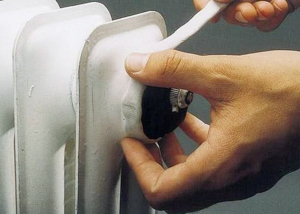 Cold welding is not applicable if the load on the parts is significant, the weld seam does not work well for tearing. You should not use glue intended for gluing metals in gluing wood, if the glue has a filler - metal powder, then it will not glue the wood. When choosing welding, look at the temperature limit of the application - high temperature cold welding is stronger than other similar ones. When making glass cutters, the diamond can be attached to the handle with this glue.
Cold welding is not applicable if the load on the parts is significant, the weld seam does not work well for tearing. You should not use glue intended for gluing metals in gluing wood, if the glue has a filler - metal powder, then it will not glue the wood. When choosing welding, look at the temperature limit of the application - high temperature cold welding is stronger than other similar ones. When making glass cutters, the diamond can be attached to the handle with this glue.
Views
Cold welding is a special type of adhesive that hardens in a short time and avoids reactions with engine oil or other combustible elements of a car. The adhesive adheres well to a variety of metal surfaces.
The variety of welding offers on the market is represented by several types.
- Spot welding is a method for bonding soft metals such as aluminum, brass or copper. In everyday life, this can be the handles of pots or fixing copper pads on aluminum wires for reliable contacts.
- Seam welding is widely used to create hermetically sealed objects such as the body of a device or vessel. To work, you will need contour punches.
- Butt welding is the main method for joining electrical cables.
- T-weld - used to attach brass studs with aluminum leads, transformer windings, and so on.
- Shear welding - designed to connect heating and water pipes.
The glue is available on the market in two possible versions.
- In liquid form, it is based on epoxy resin, which slowly hardens in combination with a hardener. The composition is used in conjunction with a metal mesh or fiberglass. When applied to bonded surfaces, the adhesive does not leave unpleasant odors or emissions.
- In its plastic form, the glue is presented in the form of a thick mass, pressed into bars. In this form, it is used as a putty, reminiscent of children's plasticine.
Cold welding
In consistency, the glue mass can be of a plastic-like appearance. This is when it requires manual crushing, softening. And liquid welding for metal, plastic and other materials, two-component.
Has the following types:
- Point. Suitable for bonding elements made of copper, brass, aluminum. That is soft metals. The mass is applied not as a continuous seam, but in dots, tacks.
- Suture. Designed for sealing objects.
- Butt. Connects materials when docked. Convenient when attaching the electrical cable.
- Shear welding. It is used when working with a heating system. When connecting pipes of different diameters.
- T-shaped - used for fastening brass pins, transformer windings, etc.
By application, glue refers to the materials used:
- When joining metal.
- With various breakdowns of the car.
- A material with heat-resistant properties is suitable for joining parts that are operated at high temperatures.
- When working under water.
Advantages and disadvantages
First, let's take a look at the main advantages of cold welding:
- the availability of the product for consumers, you can buy at any auto or hardware store, a large selection depending on the conditions of use and purpose;
- ease of use, for this there is no need to have specialized qualifications and special equipment, the elements can be connected without their preliminary dismantling;
- quick result, is able to quickly provide assistance in some emergency and unforeseen situations, thanks to the plasticity of the glue, you can create patches of any shape from it and even replace lost parts;
- with this type of welding, in contrast to the traditional one, the surfaces are not exposed to high temperatures and are not deformed;
- often, it is the only way to connect aluminum and copper parts, as well as to repair containers containing explosive and flammable substances.
Main disadvantages:
- Cold welded seams cannot resist pulling forces as well, that is, they are not as strong as seams obtained from conventional welding;
- this material is not intended for large-scale work and is not suitable for repairing larger defects;
- surfaces must be thoroughly cleaned before bonding to prevent deterioration of adhesion.
Specifications
Cold welding is an epoxy resin-based plastic adhesive. The two-component composition is stored for a long time without losing its basic properties. One-component products require quick application, as they quickly lose their bonding qualities.
Most often, the product is produced in the form of a two-layer cylinder. Its shell is a hardener with resin and metal dust inside. This additive provides a strong bond.
In addition to the main components, welding also includes other additives, such as sulfur. Additives provide unique quality characteristics of the composition. Manufacturers, as a rule, do not disclose the entire list of substances used.
The main components that are present in most cold metal welds are the following:
- epoxy resin - the main element (provides bonding of materials to each other);
- filler, which is a metal dust (responsible for the strength of the entire bond, making the seam heat-resistant);
- various additives, the composition of which is formed by the manufacturer depending on the type of welding.
The temperature characteristics of cold welding also depend on the composition of the product. Usually, the instruction for the product contains information about the parameters, subject to which the connection will be reliable and durable. For most of the compositions, the maximum is an indicator equal to +260 C.

